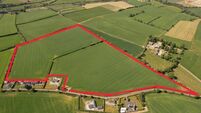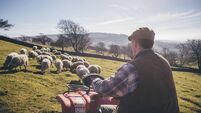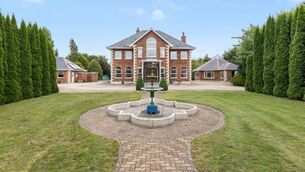Living over the shop: Murray’s sweet shop held several lifetimes of memories
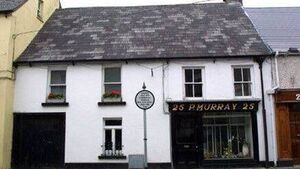
Murray's shop on Dublin Street prior to its demolition
THIS WEEK we focus on a Dublin Street premises that has been the subject of much local controversy in recent years – the local treasure known as Murray’s sweet shop of 25 Dublin Street. Sadly, this building was demolished in recent years, but it lives on in the memory of Carlovians, as do its proprietors, Aidan and Madge Murray. Speaking to their youngest son, Oliver, a professional photographer who now lives in Athy, I learned a lot about the family history and this memorable shop.
In 1911, Patrick Murray, who hailed from Crossmaglen, moved to Carlow and for a short while worked in the Royal Hotel. He and his wife briefly rented 23 Dublin Street before moving to number 25, where they opened a high-class confectionary, with the staff wearing uniforms, and stocking luxury chocolates, served with silver tongs.
At that time, there was another premises accessed through the gates of number 25 where an elderly gentleman lived. Also, Carbery’s builders had their yard at the back of the premises, including a lime kiln. Eventually, the full premises was bought out by the Murrays.

The original premises dated from the Jacobean time, and according to Aidan, who was an expert in history, the old Medieval Carlow wall divided his premises from next door, which belonged to bootmaker Charlie Lewis. Some of this wall still exists. One of the many lanes of Carlow passed through Murray’s and joined up with the lane behind the Irishman’s pub, and evidence of old cottages could still be seen on the right-hand side through the side gate of Murray’s.
Aidan Murray was the eldest of five children. Trained as a primary school teacher in St Patrick’s College, Drumcondra, his first teaching position was in Bray. However, the premature death of his father meant that he had to return to Carlow to look after the family and the business. Taking up a position in the Christian Brothers School (now Bishop Foley NS), where he taught for over 40 years, he put his musical skills to great use in the classroom, breaking up the day by teaching the boys to sing in harmony. He rewarded those who won his spelling and mental arithmetic tests by allowing them to choose whatever sixpenny chocolate bar they wanted from his own shop, before sending a boy down to collect it.
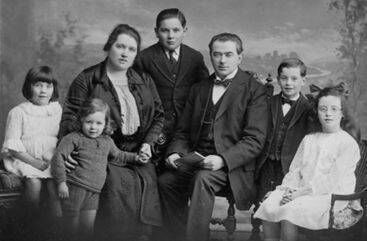
Murray’s shop had an air of old-world charm about it. The terrazzo floor had been specially commissioned by Aidan’s father. The counters and shelving were mahogany and there were huge mirrors – an attempt to make the interior brighter. The mirrors behind the shelves of glass jars full of sweets were also useful for keeping an eye on customers when the server’s back was turned.
On one occasion a man was noticed putting chocolate in his pocket while cigarettes were being fetched. “That will be 20 shillings,” he was told. “But the cigarettes are only ten shillings,” he argued.
“Yes, but the rest is for the chocolate in your pocket!” was the reply To the left of the main shop was the ice-cream parlour. Patrick had the foresight to buy an Italian-American ice-cream machine which was operated by a large generator outside. Huge vats of vanilla ice-cream were made with milk from the Leix Dairy. There were farthing, ha’penny, penny and tuppeny wafers and, in the early days, people would sit inside to eat them. In Aidan’s time, the ice-cream was as popular as ever, although it was take-away only.
For many years, Aidan’s sister Maureen ran the shop along with other staff. Maureen married watchmaker Willie Bramley, father of Pat Bramley of Bramley’s jewellery shop.
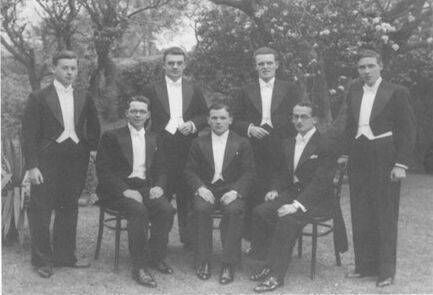
To the back of the shop, many will remember there were two oval windows with net curtains and a door leading to the house. Aidan would sit at the far end of a long table where he could watch customers coming and going. He liked nothing more than to chat about music and plays and writing, and if customers had to wait, so be it! His great friend, Liam D Bergin, was a nightly visitor.
Musical evenings were held in the upstairs room with the piano, and writers like Eoghan Ó Tuaraisc were regular guests. Aidan formed a group of singers known as The Carlow Septet, who were invited to sing all over Ireland and even featured on national radio. He also conducted the Graiguecullen Men’s Choir and was instrumental in setting up the Old Carlow Society and publishing the first Carloviana magazine.
Aidan’s wife Madge was an equally interesting character. While not greatly involved in the shop, she was very artistic and created wonderful window displays.
In the 1960s, despite having four children, she travelled five nights a week to UCD to study Philosophy, History and French. Then, proficient at French, she brought her sons camping to France for long summer holidays in her Volkswagen Beetle! Once, when there was a ferry strike, she had it flown over to France – her humble Beetle surrounded by Rolls Royces and Porsches!
Aidan, having cycled throughout Ireland and Britain in his youth, stayed at home while Madge became an intrepid Francophile, reading up on different regions before embarking with her sons. When the boys grew up, she fearlessly travelled alone.
Murray’s shop held several lifetimes of memories. A meeting place, an emporium, a place there was time to chat, where history was valued and loyal custom was rewarded.
This story and others in the series will feature in a book to be published later this year entitled ‘Remembering Carlow.’ If your long-established family business would like to be included, contact mariaorourkewriter@gmail.com.

